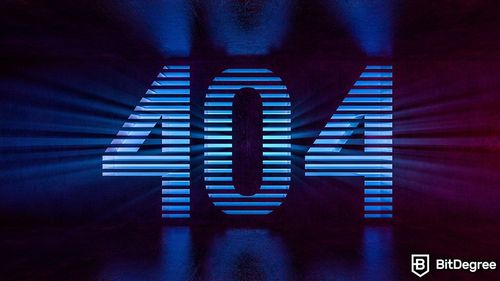In a world where cryptocurrency and blockchain technology evolve at a breakneck pace, a new phenomenon, ERC-404, has taken the crypto community by storm.
From social media platforms like Twitter and LinkedIn to casual conversations in coffee shops, ERC-404 has emerged as a topic of widespread interest and speculation.

Did you know?
Want to get smarter & wealthier with crypto?
Subscribe - We publish new crypto explainer videos every week!
What is FUD in Crypto? (Fear, Uncertainty & Doubt Explained)


ERC-404 token standard is transforming the landscape of digital assets by merging the capabilities of ERC-20 and ERC-721 standards, known for token issuance and non-fungible tokens (NFTs), respectively, into a unified protocol.
ERC-404 aims to enable direct ownership of a portion of an NFT by multiple wallets, potentially unlocking future applications such as tokenizing specific exposures for loans or staking.
This approach addresses a significant pain point in the crypto community: the conflict associated with previous fractionalization methods, which often involved complex wrapping solutions that weakened the essence of the original NFT, thus hampering wider adoption.
ERC-404 standard's first token is Pandora. Pandora operates on a unique model where purchasing a token also yields a "replicant" NFT with random traits, which can be kept, sold, or burned alongside the token for liquidity.
This system presents a promising avenue for addressing the liquidity challenges faced by traditional NFT collections, as it allows for the instant sale or burning of NFTs through the associated Pandora tokens.
According to one of the developers behind Pandora and ERC-404, the crypto community's contempt for friction has led to the development of ERC-404.
Every solution before ERC-404 had too much friction and was usually a wrapping solution that abstracted the original NFT that people wanted to fractionalize or make liquid. Collectors hated this, and it limited adoption significantly. ERC-404s have these functions by default and don't rely on confusing third-party protocols and solutions.
The developers of ERC-404 acknowledge the unconventional nature of blending two distinct standards, which were not initially designed to interoperate. However, their goal has been to merge these standards as seamlessly as possible, minimizing compromises.
Despite the experimental and unaudited status of this standard, extensive testing has been conducted to ensure its functionality aligns as closely as possible with its intended purpose.
However, some developers highlight the experimental essence of ERC-404, cautioning that the integration of overlapping standards may lead to incomplete understanding among integrating protocols of their combined functions.
ERC-404 has undoubtedly captured the crypto community's attention, offering a novel approach to integrating fungible and non-fungible tokens. As we witness the proliferation of ERC-404 projects, it's crucial to remain vigilant, recognizing this developing standard's innovative potential and risks.
In the ever-evolving landscape of cryptocurrency, ERC-404 represents both a milestone in token standard innovation and a cautionary tale of the need for thorough scrutiny and due diligence.





















